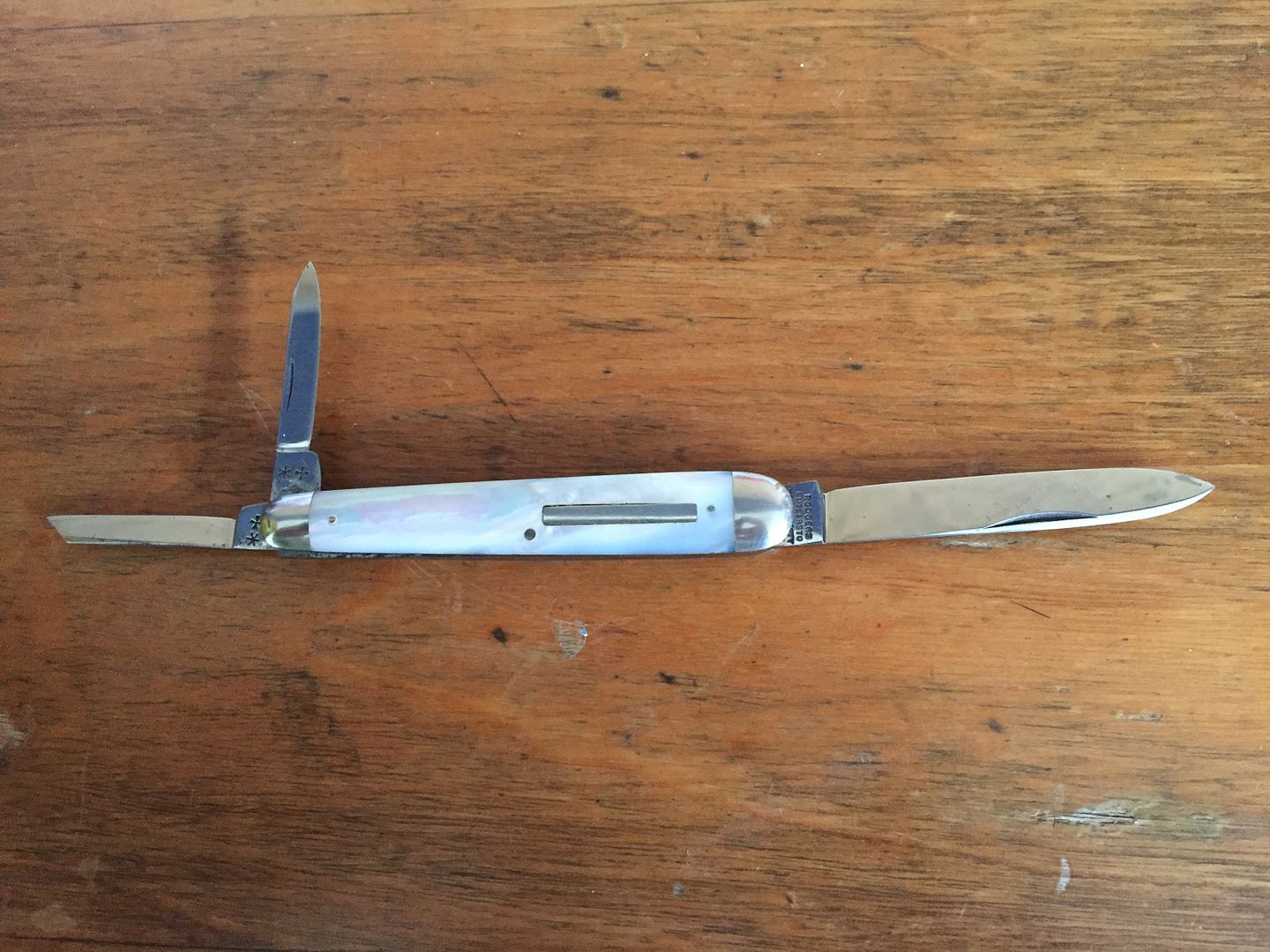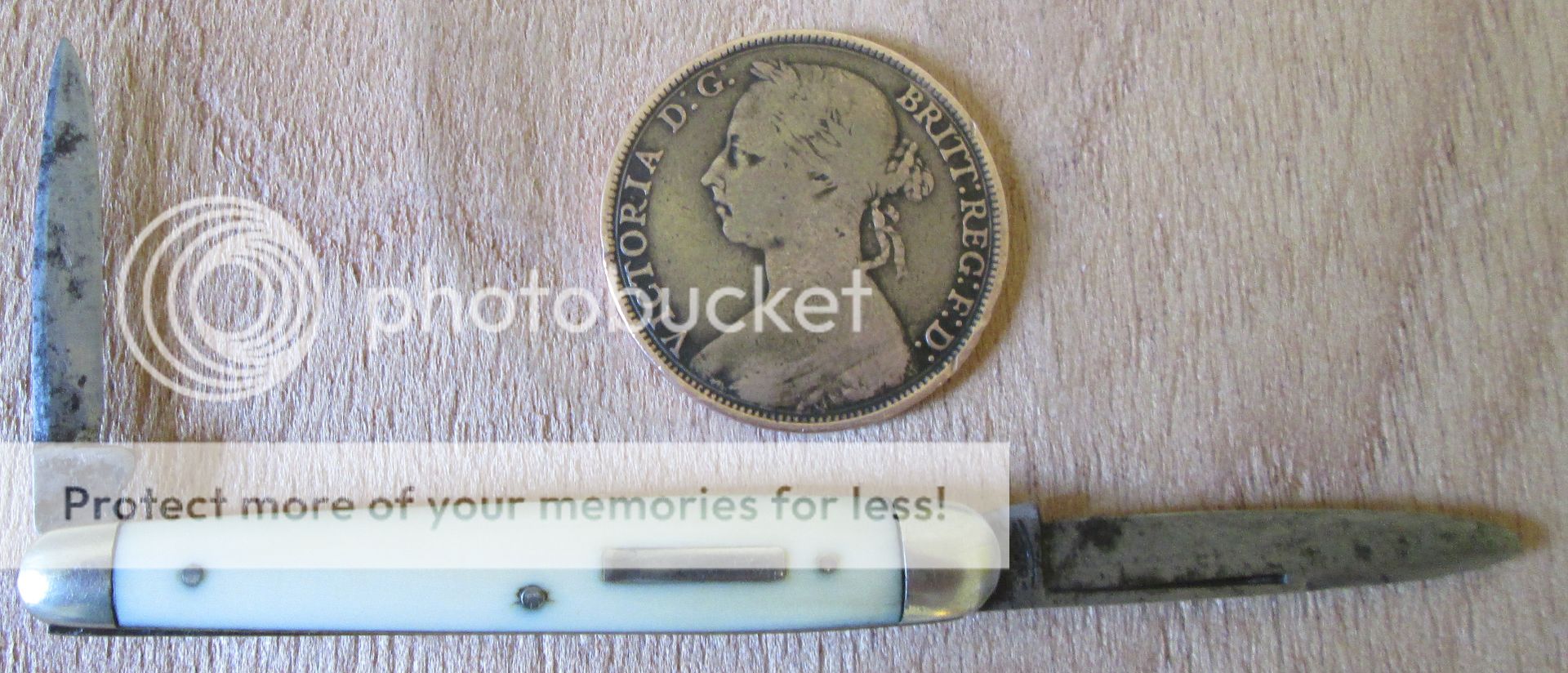-
The BladeForums.com 2024 Traditional Knife is available! Price is $250 ea (shipped within CONUS).
Order here: https://www.bladeforums.com/help/2024-traditional/
You are using an out of date browser. It may not display this or other websites correctly.
You should upgrade or use an alternative browser.
You should upgrade or use an alternative browser.
Sheffield History and my first Taylor's Eye Witness - and now, second
- Thread starter Chui
- Start date
- Joined
- Dec 2, 2005
- Messages
- 71,109
Cheers mate, just replied :thumbup:
- Joined
- Dec 2, 2005
- Messages
- 71,109
Thought I'd add a few facts and figures:
In 1616, the population of the township of Sheffield was 2.207. By 1736, it was 10,121. By 1861, it was 185,172.
In the 17th century, 60% of the adult male population of Sheffield were cutlers.
In 1624, when the Company of Cutlers in Hallamshire was established, 350 members immediately enrolled, and 81 the following year.
In 1672, the Hearth Tax returns recorded 224 smithies to 494 houses in the central township of Sheffield one smithy for every 2.2 houses. A further 372 smithies were recorded in the rural parts of the parish. 1 in 4 cutlers did not have a smithy as they did not forge blades.
In the 17th century, 1,324 boys served cutlery apprenticeships of at least 10 years, and 3 boys each served 16 years. Ten year apprenticeships were being entered into as late as 1814, and the usual term was 7 years, or more commonly eight.
The archives of the Cutlers Company of Hallamshire contain the records of 28,500 apprenticeships and freedoms between 1624 and 1814.
Between 1624 and 1791, around 9000 cutlers marks were issued by the Hallamshire Cutlers Company.
In 1791-2, 1,346 freemen were admitted into the company and 482 apprentices enrolled.
In 1695, a Sheffield cutler named Lewis Nawl died leaving seven GROSS of spring knives. They were valued at 36 shillings - currently £1.70 Sterling - $2.58 US.
In 1764, a journeyman cutler could earn up to 12 shillings (86 cents) a week, compared to a skilled carpenter earning nine.
In 1616, the population of the township of Sheffield was 2.207. By 1736, it was 10,121. By 1861, it was 185,172.
In the 17th century, 60% of the adult male population of Sheffield were cutlers.
In 1624, when the Company of Cutlers in Hallamshire was established, 350 members immediately enrolled, and 81 the following year.
In 1672, the Hearth Tax returns recorded 224 smithies to 494 houses in the central township of Sheffield one smithy for every 2.2 houses. A further 372 smithies were recorded in the rural parts of the parish. 1 in 4 cutlers did not have a smithy as they did not forge blades.
In the 17th century, 1,324 boys served cutlery apprenticeships of at least 10 years, and 3 boys each served 16 years. Ten year apprenticeships were being entered into as late as 1814, and the usual term was 7 years, or more commonly eight.
The archives of the Cutlers Company of Hallamshire contain the records of 28,500 apprenticeships and freedoms between 1624 and 1814.
Between 1624 and 1791, around 9000 cutlers marks were issued by the Hallamshire Cutlers Company.
In 1791-2, 1,346 freemen were admitted into the company and 482 apprentices enrolled.
In 1695, a Sheffield cutler named Lewis Nawl died leaving seven GROSS of spring knives. They were valued at 36 shillings - currently £1.70 Sterling - $2.58 US.
In 1764, a journeyman cutler could earn up to 12 shillings (86 cents) a week, compared to a skilled carpenter earning nine.
- Joined
- Nov 11, 2006
- Messages
- 2,697
Thanks for the great information Jack. Chui888 I have similar pattern with smooth ram's horn but without the file work on the spring.




- Joined
- Dec 2, 2005
- Messages
- 71,109
Always a treat to see you post S-K, and another lovely knife of course  :thumbup:
:thumbup:
- Joined
- Nov 11, 2006
- Messages
- 2,697
Thanks very much Jack.
I thought this large Eyewitness jack knife from circa 1880s may be of interest here. Needham, Veall and Tyzack owned the name and trademark at the time.



I thought this large Eyewitness jack knife from circa 1880s may be of interest here. Needham, Veall and Tyzack owned the name and trademark at the time.



- Joined
- Dec 2, 2005
- Messages
- 71,109
That's beautiful S-K :thumbup:
Ernie1980
Gold Member
- Joined
- Apr 19, 2012
- Messages
- 8,161
I love the old Sheffield blades, both straight razors and knives! I particularly like Joseph Rodgers and Sons, who did fantastic work. I have this knife in my pocket as I type this:

The finish and action is every bit as good if not better than anything made today!! Here is a terrible picture I have on my phone of some of my other vintage Sheffield knives:


The finish and action is every bit as good if not better than anything made today!! Here is a terrible picture I have on my phone of some of my other vintage Sheffield knives:

- Joined
- Nov 11, 2006
- Messages
- 2,697
Beautiful sleeveboard whittler Ernie. 
- Joined
- Dec 2, 2005
- Messages
- 71,109
Old Engineer
Gold Member
- Joined
- Nov 30, 2014
- Messages
- 10,077
Jack : Do you have any idea when they started to put the Eye Lashes on the Eye in their tang stamp ?????
Beautiful knives guys!!!!!!
Harry
Beautiful knives guys!!!!!!
Harry
- Joined
- Nov 11, 2006
- Messages
- 2,697
Nice TEW knives Jack. What is the handle material on the last knife please?
Here's one more.


Here's one more.


- Joined
- Dec 2, 2005
- Messages
- 71,109
Jack : Do you have any idea when they started to put the Eye Lashes on the Eye in their tang stamp ?????
Beautiful knives guys!!!!!!
Thanks Harry. I think the occasional omission of the lashes was only something which occurred in later years. They were certainly there in the mid 19th century when John Taylor's son-in-law Thomas Needham acquired the mark. All the knives in my post above, made over a very lengthy period, have lashes beneath the eye :thumbup:
Nice TEW knives Jack. What is the handle material on the last knife please?
Here's one more.


Thank you my friend, it's a synthetic, has a nylon-like feel. I think that pattern is still included in the Taylor's catalogue, but without the shield. Not that I wish to imply mine is an old one, it certainly isn't, another pic:

Your Serpentine Jack is quite lovely :thumbup:
- wonderful, many thanks Jack and s-k :thumbup:
Thank you
- Joined
- Dec 2, 2005
- Messages
- 71,109
That looks pretty good Chui  Congratulations :thumbup:
Congratulations :thumbup:
Old Engineer
Gold Member
- Joined
- Nov 30, 2014
- Messages
- 10,077
























